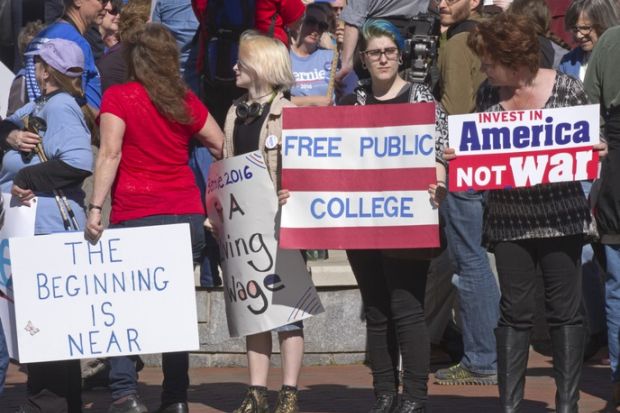At a time of staggering and ever-rising student debt, politicians have found that the words “free college” have a ring that voters want to hear. Thirty US states have some version of free college enacted or under consideration, and proposals to spread it even more broadly will undoubtedly play a significant role in the 2020 presidential campaign.
The political urgency recognises that education beyond high school is a 21st-century necessity if citizens are to attain financial self-sufficiency in a democratic society that lacks an extensive social safety net. There might be some disagreement about how many years of college, or which degrees, should be funded as a public good, or how free college programmes should be structured and financed, but even Republican-led states such as Tennessee have taken some bold steps.
Americans prefer education as means to upward mobility because it ties most directly to individual responsibility. People have to pass the test to get into the best colleges that set them up to secure the best jobs. College preparation is also the way that Americans pass on class and racial advantages through the generations. But at a time when loan debt exceeds $1.6 trillion (£1.3 trillion), those who lack such advantages are finding that they can’t afford to go to college at all, or that the cost of doing so amounts to less than the benefits.
States historically have administered and financed their public college and university systems, while the federal government provided loans and grants to students to attend the institutions of their choice, whether public or private. Many free college proposals floated by Democratic presidential candidates, from Bernie Sanders to Elizabeth Warren, would flip this system on its head, requiring the federal government to work in partnership with the states to fund public colleges and universities. Those institutions, in return, would provide tuition-free education for students.
But that wouldn’t make free college free. Tuition comprises only 20 per cent to 40 per cent of the total cost of attendance at two- and four-year public colleges and universities, once room and board, books and other expenses are taken into account. In addition, most state-run free college programmes cover only two-year community colleges. Tennessee’s, the most established, promises free tuition to all community college students who meet the academic requirements – an offer recently extended to working adults.
Other states offer free college to students from families with incomes below a specified limit. New York started a scholarship programme at two- and four-year public colleges for those who have incomes below the mandated threshold, study full-time and pledge to work in the state for a specified time after graduating. Most recently, Washington approved its own free college plan for students from low- and middle-income families, funded by a surcharge on employers of highly skilled workers.
One of the key debates around free college, at both state and federal levels, is who stands to benefit. Some argue that the benefits accrue mostly to middle- and upper-income students because many low-income students already receive Pell Grants and other needs-based aid. This is a particular criticism of “last dollar” programmes, whose aid covers only the tuition costs remaining after federal and other grants and scholarships are applied.
Critics say recipients should be means-tested, as they are in New York and Washington. But while this might make public schemes more progressive, it is not always ideal for large-scale programmes designed to tackle major social issues. The more universal programmes might prove to be more politically sustainable. As a society, we have invested in parks, libraries, public elementary and secondary schools and other services that potentially benefit everyone. Some see free college as a way to extend this public-good model to higher education.
But affordability remains a big issue. Sanders’ and Warren’s proposals would split the cost between the central and state governments, requiring each to increase tax revenue, cut other programmes, or both. Whether the politics of that would be palatable to an electorate highly averse to both options remains to be seen.
Anthony P. Carnevale is director and research professor of the Georgetown University Center on Education and the Workforce, an independent, non-profit research and policy institute affiliated with the Georgetown McCourt School of Public Policy.
POSTSCRIPT:
Print headline: No such thing as free college
Register to continue
Why register?
- Registration is free and only takes a moment
- Once registered, you can read 3 articles a month
- Sign up for our newsletter
Subscribe
Or subscribe for unlimited access to:
- Unlimited access to news, views, insights & reviews
- Digital editions
- Digital access to THE’s university and college rankings analysis
Already registered or a current subscriber? Login








